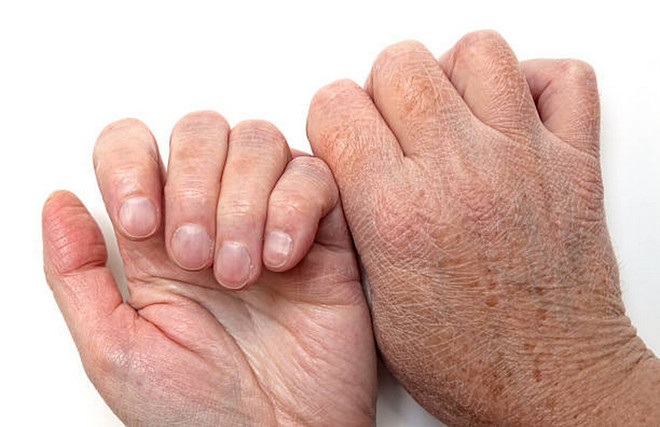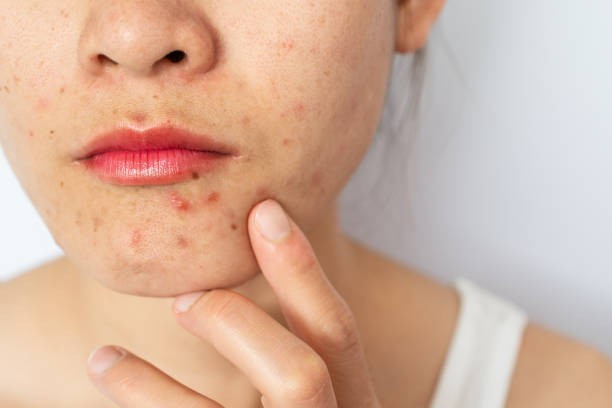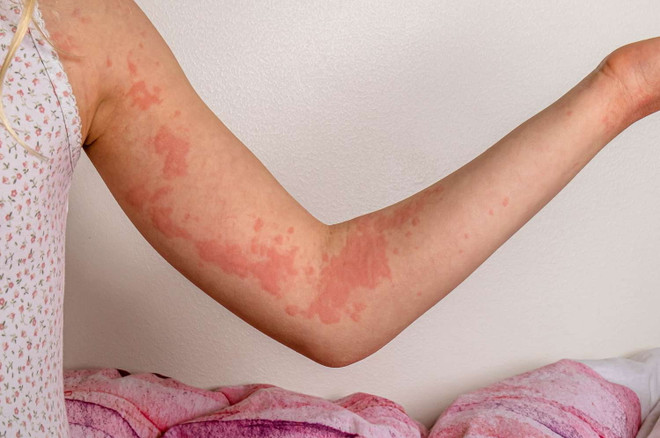As the weather changes from Summer to Fall, the humidity drops, the temperature gets cooler, and the dry wind makes the skin more susceptible to imbalance. Changes in temperature, humidity, and environmental conditions often create favorable conditions for the appearance or recurrence of many skin diseases.
This is the time when the body needs to adapt to the changing climate, especially the skin - the most sensitive part and vulnerable to external factors. Therefore, it is also the time when many skin diseases become more common or worse. Below are common skin diseases.
1. Skin allergies due to weather
The transition from hot to cool climates is often accompanied by a change in humidity levels, which can cause the skin to lose its balance and become dry and easily irritated. This can lead to symptoms such as itching, redness, or rash-like lesions. These symptoms are more common in people with sensitive skin or a history of skin allergies.
2. Dry and cracked skin
During the fall, the humidity in the air drops significantly, causing the skin to lose its natural moisture balance. This causes the skin to become dry, flaky, and in some severe cases, can even lead to cracking, causing pain and discomfort.

3. Eczema
People with eczema or a history of eczema often find that their condition worsens during the changing seasons. The change in humidity irritates the skin, leading to red, flaky, and intensely itchy patches that can be uncomfortable.
4. Acne
Abnormal changes in weather, along with the difference in temperature between day and night, can lead to disturbances in the activity of the sebaceous glands on the skin. When excess oil is not effectively controlled and combined with factors such as dirt and bacteria from the environment, acne is at risk of appearing or becoming worse for those with oily skin.

5. Contact dermatitis
Contact dermatitis occurs when the skin reacts to environmental irritants or allergens, such as pollen, which is common in the fall. Symptoms often include redness, swelling, or blisters at the contact area, which can be uncomfortable and require prompt treatment.
6. Hives
In people with sensitive skin, the changing of seasons can easily cause allergic reactions, of which hives are a common problem. This condition is the result of the immune system reacting to external stimuli, causing red bumps on the skin accompanied by an uncomfortable, itchy feeling.

7. Psoriasis
Changes in weather, especially dry conditions, combined with immune factors can cause psoriasis to flare up more severely. The disease often manifests itself through red, thick, scaly patches of skin, mainly appearing on the elbows, knees and scalp.
8. Skin fungus and tinea versicolor
Summer with hot and humid climate and excessive sweating often creates favorable conditions for fungi to grow strongly. When the weather changes to autumn, diseases such as skin fungus and tinea versicolor often tend to last longer, causing a lot of trouble for the sufferer.
Common symptoms of the disease include patches of skin that change color, which can be white, pink, or brown; accompanied by mild itching and fine scales on the affected skin.
To protect your skin during this season, proper care plays an extremely important role. In addition to maintaining a daily moisturizing routine with products suitable for your skin type, you should also pay attention to eating a nutritious diet, increasing your water intake and avoiding contact with agents that can cause allergies.
In particular, if you experience severe or prolonged symptoms, it is essential to seek advice from a dermatologist to ensure the best skin health./.
How to prevent skin diseases when summer turns to fall:
- Moisturize your skin regularly, choose gentle products.
- Drink enough water, supplement with green vegetables and fruits rich in vitamins C and E.
- Avoid bathing in water that is too hot or scrubbing vigorously.
- Keep the living environment clean, airy, and dust-free.
Source: https://www.vietnamplus.vn/mot-so-benh-ve-da-thuong-gap-khi-thoi-tiet-chuyen-tu-he-sang-thu-post1061079.vnp






![[Photo] Soldiers guard the fire and protect the forest](https://vphoto.vietnam.vn/thumb/1200x675/vietnam/resource/IMAGE/2025/9/27/7cab6a2afcf543558a98f4d87e9aaf95)






























![[Photo] Prime Minister Pham Minh Chinh attends the 1st Hai Phong City Party Congress](https://vphoto.vietnam.vn/thumb/1200x675/vietnam/resource/IMAGE/2025/9/27/676f179ddf8c4b4c84b4cfc8f28a9550)


































































Comment (0)